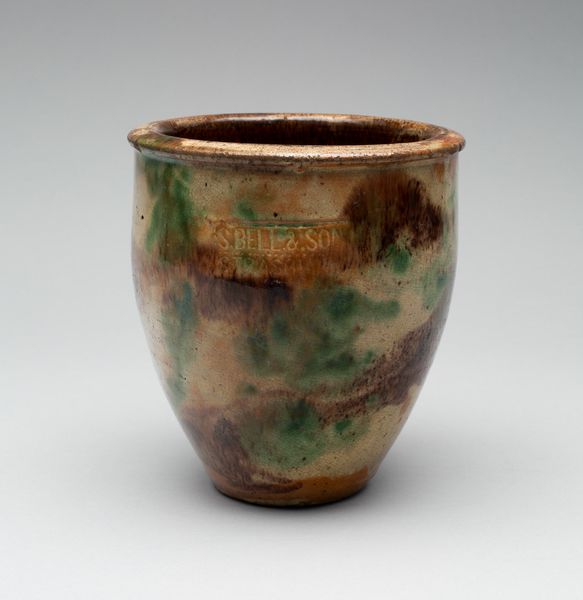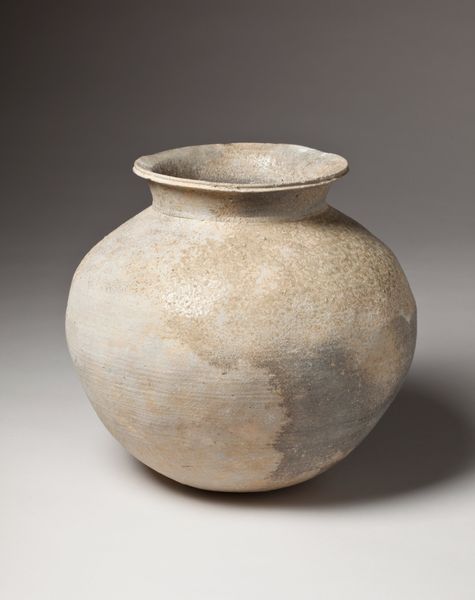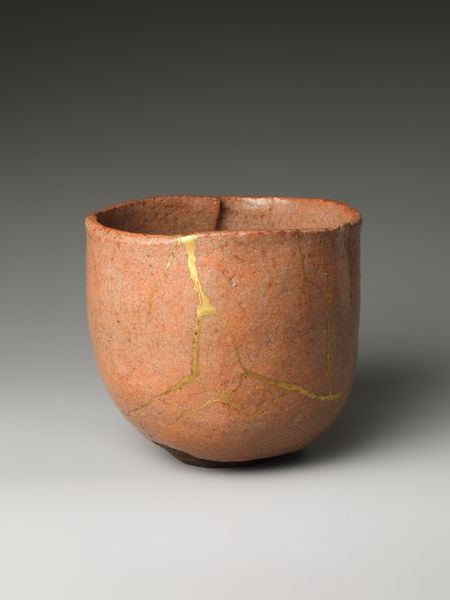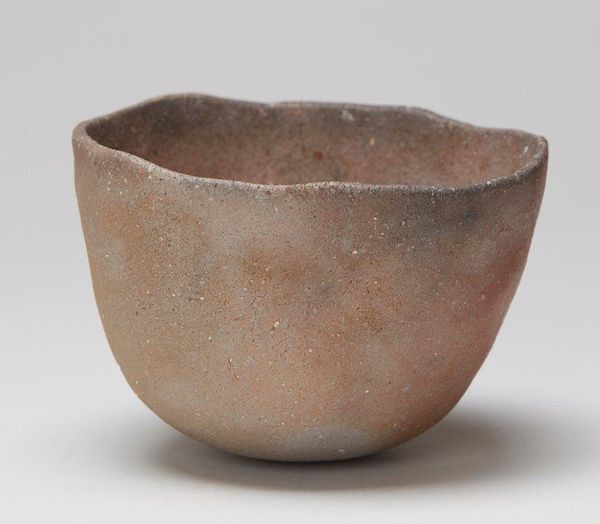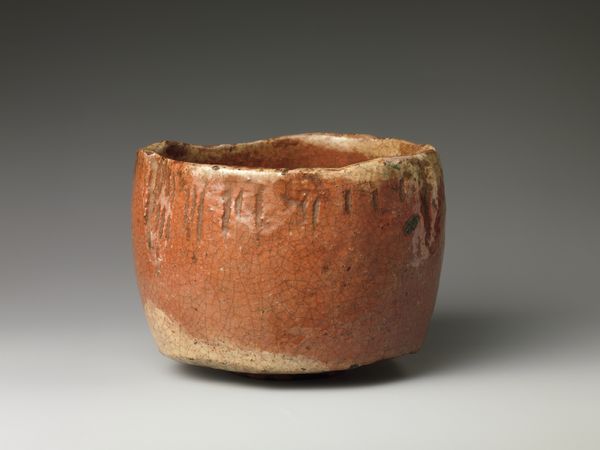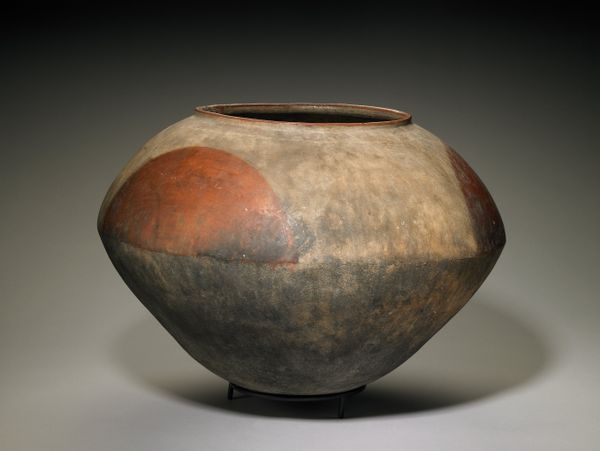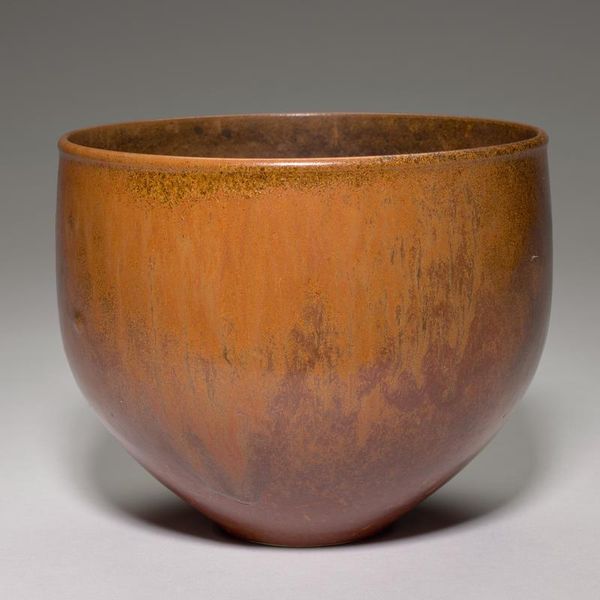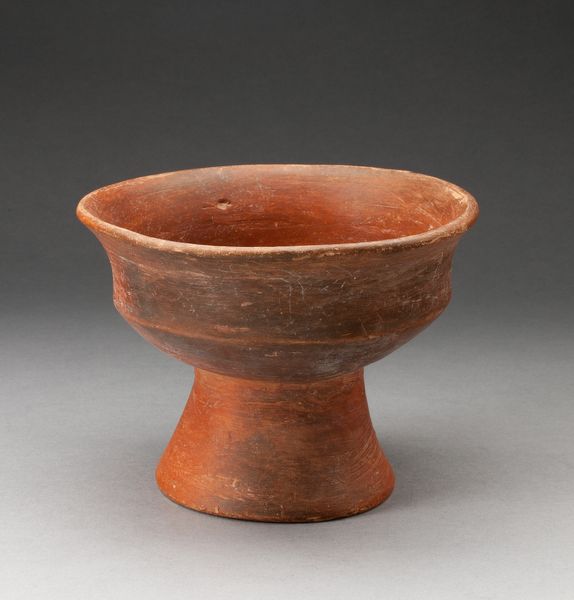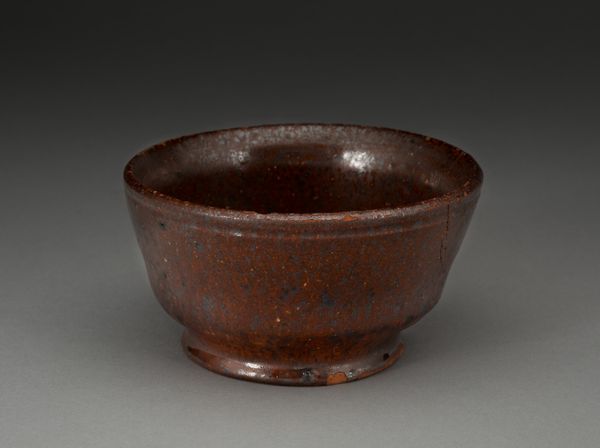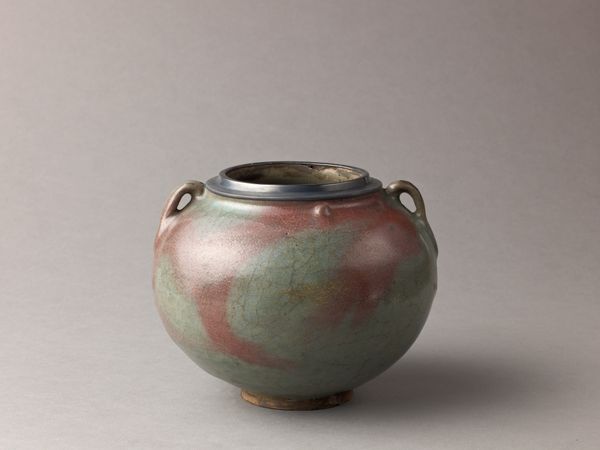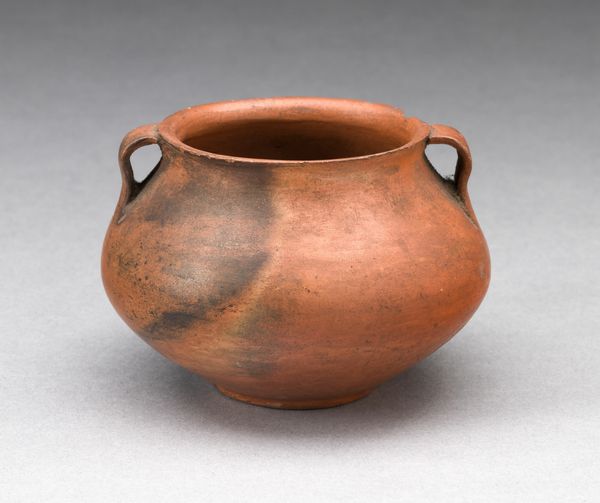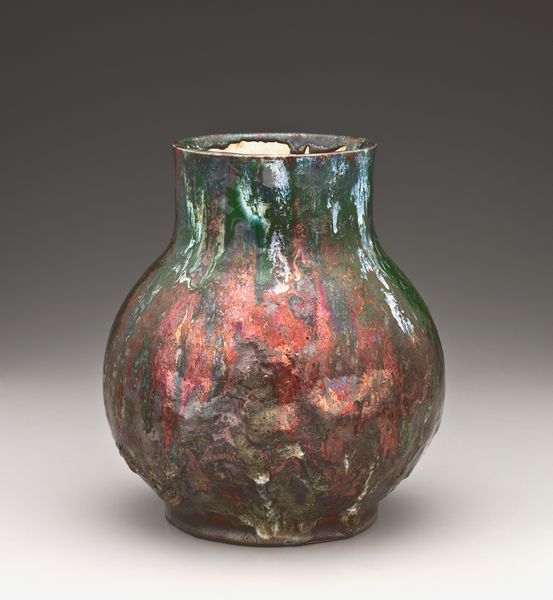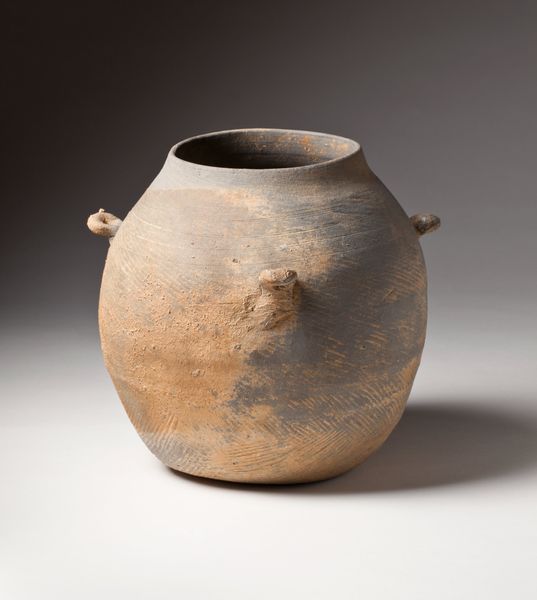
ceramic
#
asian-art
#
ceramic
#
ceramic
Dimensions: H. 4 in. (10.2 cm); Diam. 4 1/8 in. (10.5 cm)
Copyright: Public Domain
This humble-looking vessel was made in Japan by Sonyu, sometime between the late 17th and early 18th centuries. But don’t be fooled by its rough appearance. The asymmetrical form, the thick, uneven glaze – these qualities are all deliberate. At the time, tea bowls were central to chanoyu, the Japanese tea ceremony. Chanoyu was governed by strict rules of etiquette that dictated every aspect of the ritual, from the preparation of the tea to the way it was served and drunk. Sonyu was a member of the Ueda Sōko school, known for its embrace of imperfection and spontaneity as a reaction to the rigid formalism of other schools. This teabowl is thus a critique of Japan’s art institutions. To learn more, look at the history of the tea ceremony in Japan and investigate the art of the Ueda Sōko school. The meaning of this teabowl only emerges when we understand it as part of its particular social and institutional context.
Comments
No comments
Be the first to comment and join the conversation on the ultimate creative platform.
